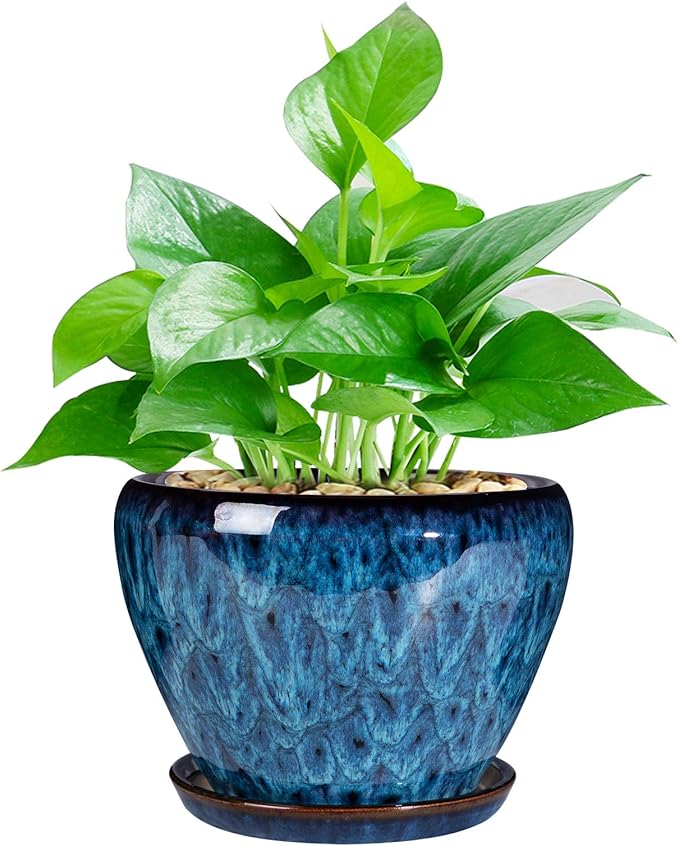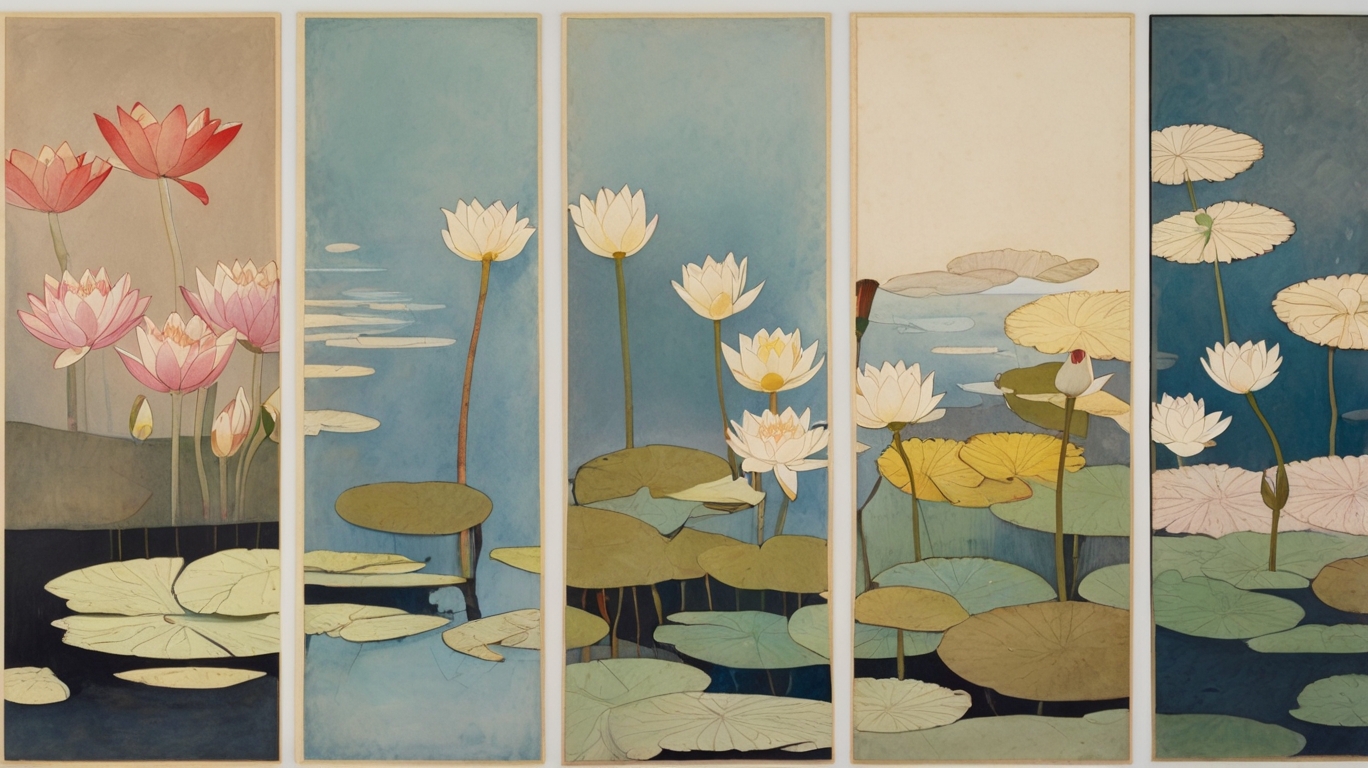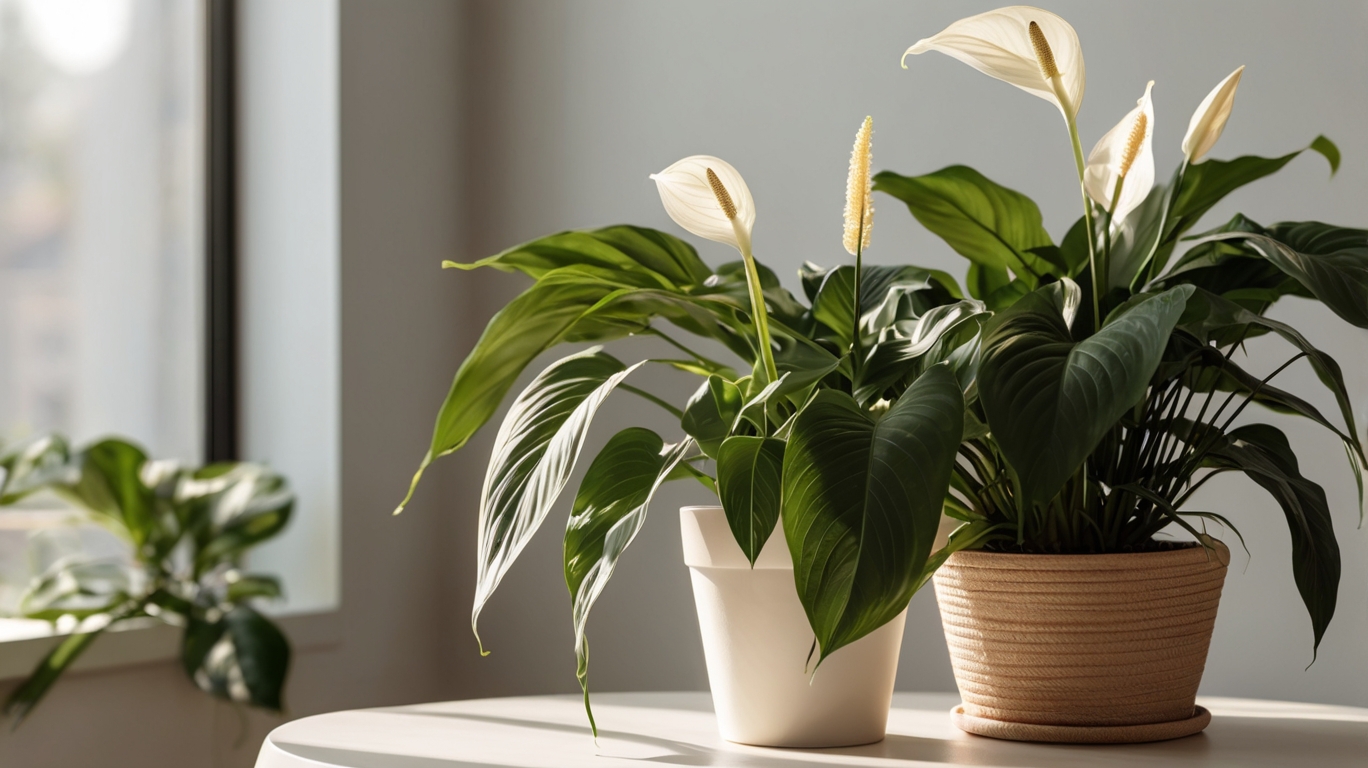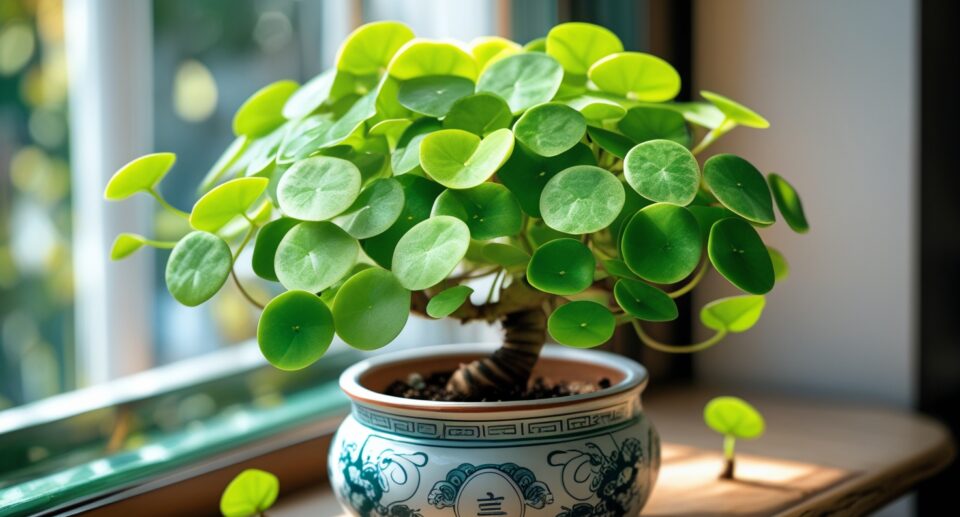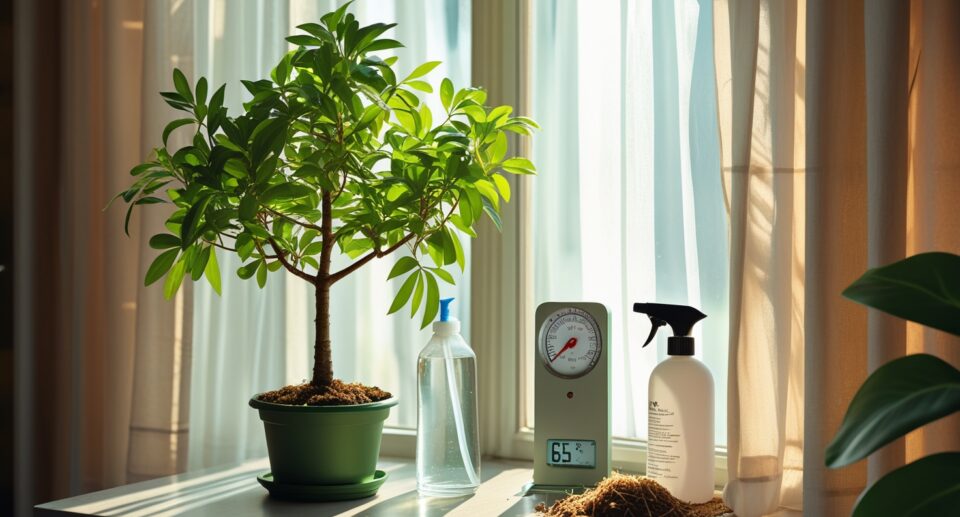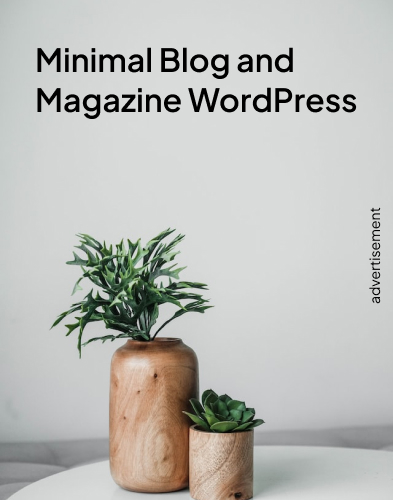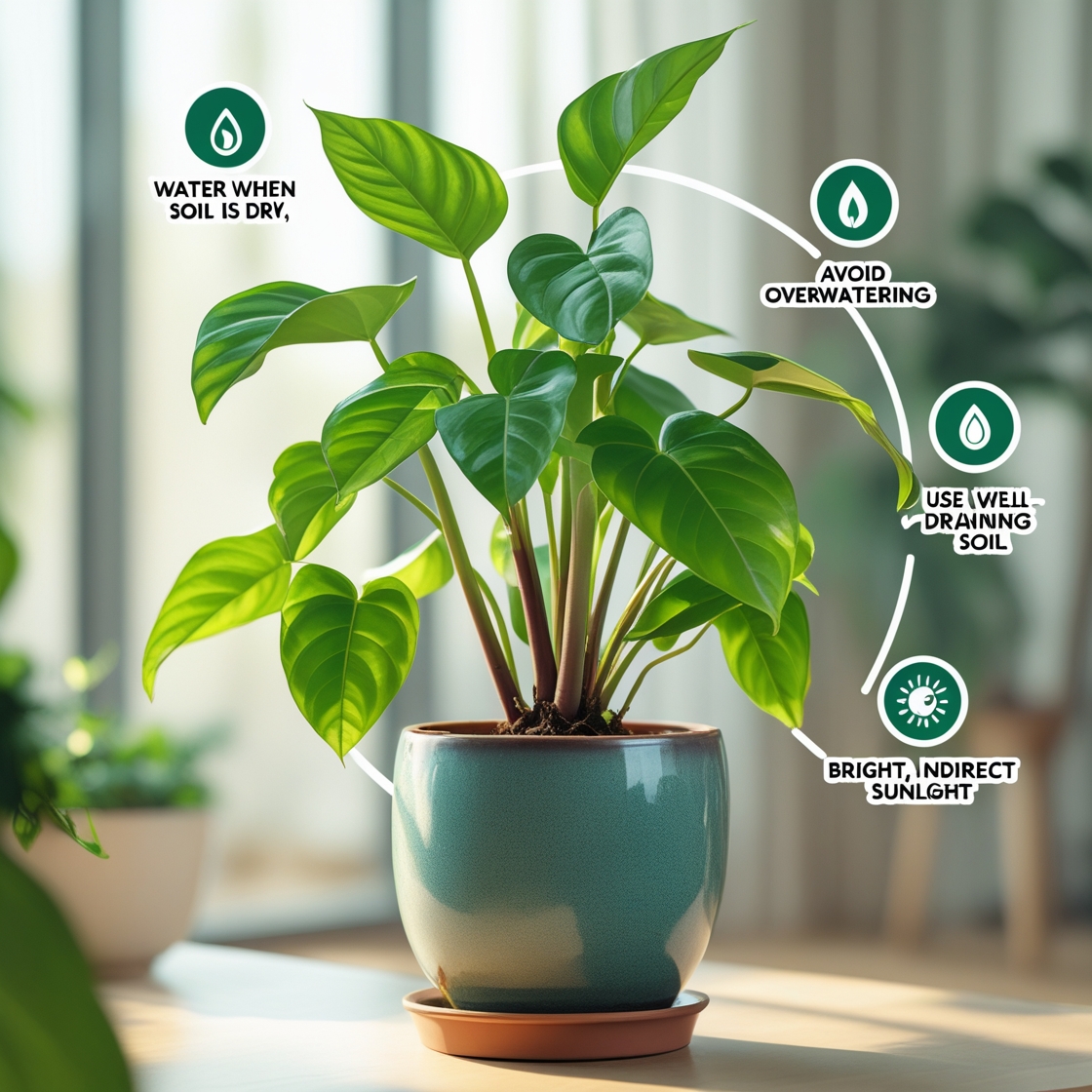Money Tree (Pachira aquatica) Growth #1 Guide: How Large Can They Grow Indoors?
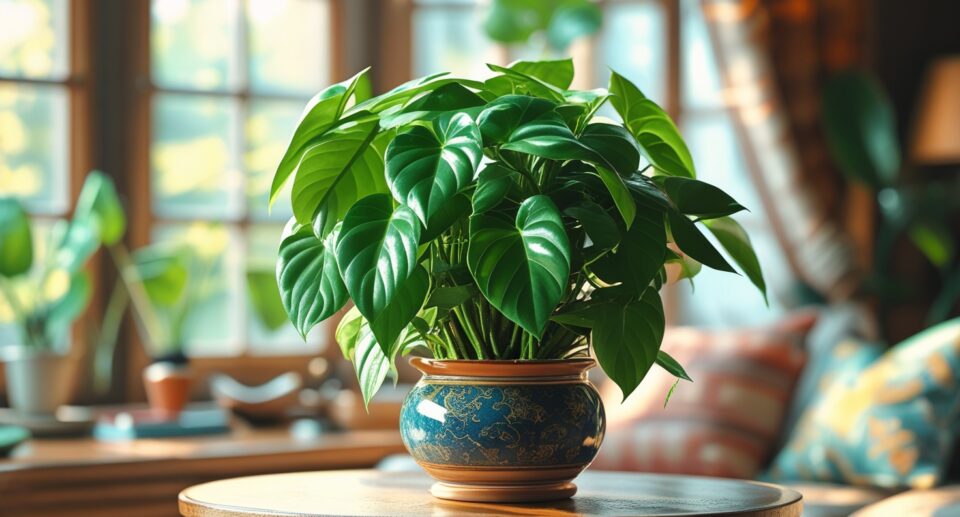
Introduction: Understanding the Money Tree Plant
The Money Tree Plant, scientifically known as Pachira aquatica, is a tropical plant that has gained popularity as a houseplant due to its unique appearance and symbolic association with prosperity and good fortune. Native to Central and South American wetlands, the Money Tree thrives in humid and swampy environments in its natural habitat. Indoors, it has adapted well to a wide range of conditions, making it an excellent choice for both novice and seasoned plant enthusiasts.
Characterized by its braided trunk and shiny green leaves that grow in clusters, the plant serves as a decorative accent that adds elegance and vibrancy to indoor spaces. The braided trunk is often a feature added during cultivation rather than being a natural occurrence, offering aesthetic appeal while maintaining the integrity of the plant.
The Money Tree (Pachira aquatica) is not only admired for its visual beauty but also for its low-maintenance care requirements. It is tolerant of various indoor conditions such as low light, irregular watering schedules, and varying humidity levels. Its ability to bounce back from occasional neglect makes it a favorite among those new to indoor gardening. Despite this resilience, providing consistent care will ensure optimal growth and health, allowing the plant to thrive and achieve its full aesthetic potential.
Its symbolic significance adds another layer of intrigue. In feng shui tradition, the Money Tree is believed to bring prosperity, luck, and positive energy to a home or workplace. This association has made it a popular gift for new homeowners or entrepreneurs, while its easy-care nature makes it a reliable decorative choice for homes and offices.
Understanding the basic attributes and needs of the Money Tree provides a foundation for cultivating it successfully indoors. Whether one grows it as a small tabletop plant or allows it to reach its full height potential, the Money Tree offers a blend of beauty, meaning, and adaptability suitable for a variety of environments.
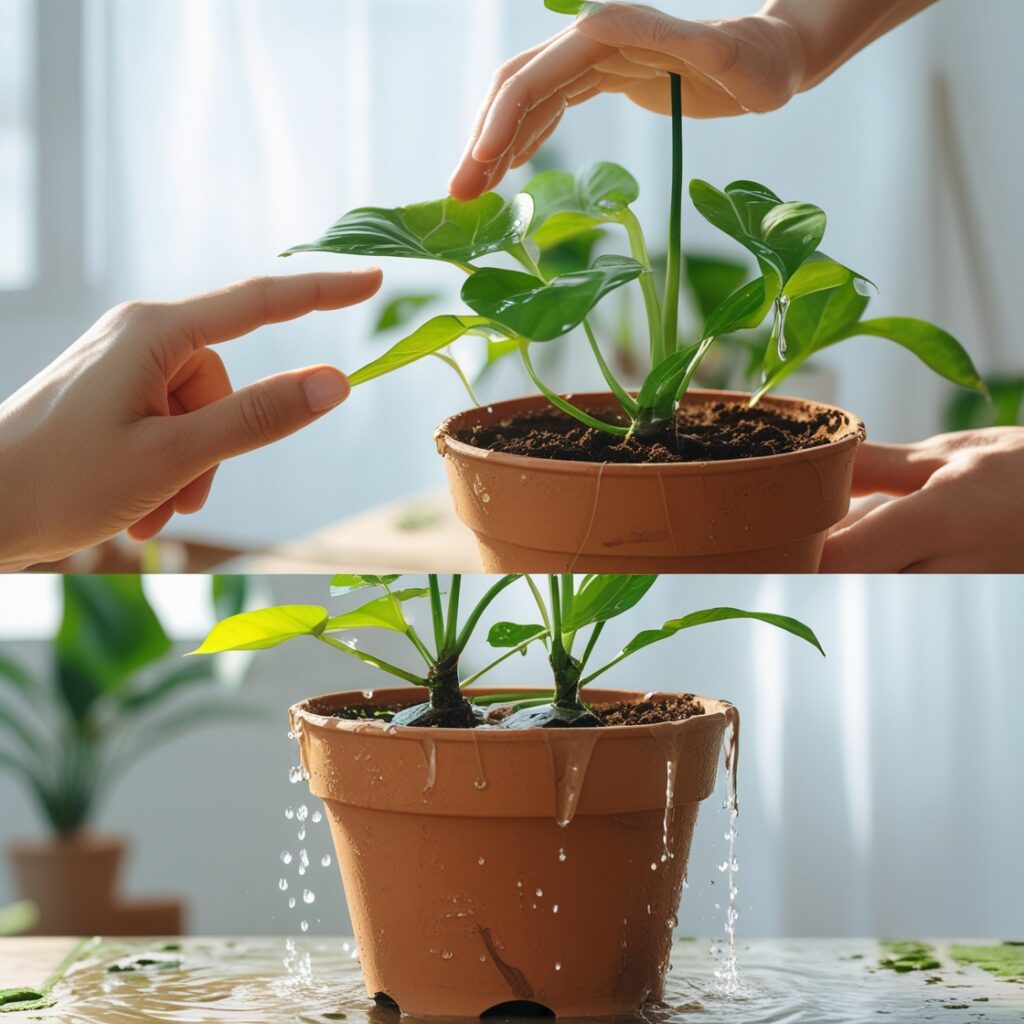
What Determines the Size of a Money Tree Plant?
The size of a money tree plant (Pachira aquatica) is influenced by several key factors, including environmental conditions, care practices, and the genetic makeup of the plant. These elements play a crucial role in how large a money tree can grow, especially when cultivated indoors.
Environmental Conditions
Money tree plants (Pachira aquatica) thrive when provided with optimal environmental conditions. Adequate sunlight, humidity, temperature, and space are pivotal in determining their growth. Indoors, the plant requires bright, indirect light to encourage healthy development. Without sufficient light, growth may slow, resulting in a stunted plant. Relative humidity levels of around 50% to 60% are ideal, as the plant originates from regions with tropical climates. Temperature should remain between 65°F and 75°F; temperatures outside this range can impact overall growth. Space is another critical factor—plants confined to tight quarters or small pots are unlikely to grow to their full potential, as their root systems require room for proper expansion.
Care Practices
Consistent and thoughtful care also influences the size of a money tree. Watering is essential, though overwatering or allowing water to accumulate at the base can harm growth. Soil quality plays a role; nutrient-rich, well-draining soil ensures the plant receives adequate minerals without becoming waterlogged. Regular fertilization during the growing season helps the plant maintain energy for larger growth. Pruning techniques further control size; trimming excess branches or leaves can focus energy on healthier growth. Conversely, neglecting pruning may result in a sprawling, uncontrolled shape.
Genetics and Growth Potential
The genetic makeup of a particular money tree impacts its size limits. While some plants may naturally exhibit slower growth, others have the genetic capacity to grow taller or wider. Money trees typically grow up to 6–8 feet indoors, though under excellent conditions, they may reach higher. Outdoor specimens in tropical climates can frequently exceed indoor height ranges, demonstrating their genetic capacity in favorable conditions.
Understanding these factors enables growers to shape the plant according to their preferences while encouraging healthy development. Each element works together to influence how large a money tree plant can grow, making proper care and attention paramount.
Money Tree Growth Patterns and Stages
Money trees (Pachira aquatica), scientifically known as Pachira aquatica, exhibit distinct growth patterns and cycles as they mature indoors. Understanding these stages enables better care and ensures optimal development. Typically grown as ornamental plants in homes, their growth largely depends on environmental conditions, including light, temperature, humidity, and pruning practices.
Early Growth Stage: Seedling to Young Plant
In the initial stage, a money tree starts as a seed or sapling. The growth is slow, focusing on root establishment and the development of a sturdy stem. During this phase, the tree requires consistent watering, but overwatering can lead to root rot. Bright, indirect sunlight helps initiate healthy leaf production. Small, oval-shaped leaves emerge as the plant gathers energy for sustained growth. Usually, the trunk begins with a single stem, which can be braided if desired, a popular practice for aesthetic purposes.
Rapid Growth Stage: Mature Stem Formation
Once established, money trees (Pachira aquatica) transition into the active growth phase. During this stage, the trunk thickens, and the leaves become more defined and palmate with five to seven lobes. Height increases significantly, sometimes reaching 3 to 6 feet indoors. Fertilizer application can bolster this rapid growth, ideally during the spring and summer. Consistent pruning shapes the plant and encourages lateral branching rather than vertical elongation.
Stable Growth Stage: Maintenance
After reaching peak indoor height, money trees enter the maintenance stage, where growth slows but remains steady. At this point, the plant’s needs stabilize to include occasional fertilization, periodic pruning for rejuvenation, and continued access to indirect light. Mature money trees retain their braided trunk structure if maintained properly, and their rich green foliage adds aesthetic appeal to the indoor space.
Careful attention to watering habits, lighting, and seasonal adjustments enhances the plant’s beauty throughout its lifecycle.
Indoor vs. Outdoor Growth: How Size Differs
Money trees (Pachira aquatica) exhibit distinct growth patterns depending on whether they are cultivated indoors or outdoors. This difference is largely influenced by environmental factors, including light exposure, humidity levels, space availability, and care conditions. Understanding these differences can help enthusiasts tailor their care strategies to achieve desired growth.
Indoor Growth Characteristics
When grown indoors, money trees tend to reach smaller maximum heights. Limited space, filtered light, and controlled conditions contribute to this compact growth. Typically, money trees grown in homes or offices will reach heights between 3 to 6 feet. Potted plants often stay smaller as their roots have restricted room to spread, curtailing overall growth. Regular pruning also plays a vital role in maintaining their manageable indoor size, as trimming encourages bushier growth rather than vertical extension.
Another contributing factor is the indirect light most indoor plants receive. While money trees tolerate lower light levels, reduced sunlight can slow their growth compared to outdoor counterparts. The controlled indoor environment, though beneficial for protecting against pests and extreme weather, limits natural growth potential. Indoor humidity also tends to be lower, which may slightly impact leaf size and fullness.
Outdoor Growth Characteristics
Outdoors, money trees (Pachira aquatica) experience more freedom to grow to their full potential. In their native tropical habitats or similarly warm climates, these trees can grow up to 60 feet tall, showcasing their ability to thrive under natural sunlight and ample space. Direct exposure to the sun encourages more rapid and robust growth, while the absence of container limitations allows their roots to expand unrestricted, supporting larger and healthier foliage.
Humidity and rainfall in outdoor settings mimic the money tree’s natural environment, contributing to vibrant growth. Outdoor conditions also foster thicker trunks and sprawling canopies, which are unlikely to develop indoors. However, outdoor exposure makes these trees more susceptible to pests, diseases, and extreme weather, necessitating careful monitoring.
Understanding the differences in growth environments helps enthusiasts decide where and how to plant their money tree for optimal size and health.
Optimal Conditions for Maximum Growth
Money trees (Pachira aquatica), often referred to by their botanical name Pachira aquatica, thrive indoors when provided with optimal growing conditions. These plants are known for their hardy and adaptable nature, but achieving maximum growth requires a delicate balance of light, water, soil quality, and environmental factors.
Lighting Requirements
Bright, indirect sunlight is essential for the health and growth of a money tree. They should be placed near a window that receives filtered light throughout the day. Direct sunlight can scorch their leaves, while insufficient light may stunt their growth or lead to yellowing foliage. For environments with limited natural light, grow lights can be employed to supplement their daily light intake.
Watering Schedule
Maintaining consistent moisture in the soil without making it soggy is vital. Money trees prefer to be watered thoroughly, but they should dry out slightly between watering sessions. Overwatering can lead to root rot, a common issue encountered by indoor gardeners. When in doubt, checking the top inch of soil for dryness can help determine the right time to water.
Humidity and Temperature Preferences
As tropical plants, money trees (Pachira aquatica) flourish in environments with moderate to high humidity. A humidity level of 50-60% is ideal for their growth. Using a room humidifier or misting the plant regularly can help achieve these levels. They also thrive in temperatures ranging from 65°F to 75°F. Avoid exposing them to sudden temperature changes or drafts, which may stress the plant.
Soil Composition
Well-draining soil is critical to preventing water stagnation and promoting healthy root growth. A blend of peat moss, perlite, and regular potting soil is often recommended. Using a pot with drainage holes is equally important to eliminate excess water.
Fertilization Needs
Money trees (Pachira aquatica) benefit from occasional feeding during their active growing season, typically spring and summer. A balanced liquid fertilizer applied every four to six weeks can encourage enhanced growth. Fertilizing should be reduced or stopped entirely during fall and winter, as the plant’s growth slows significantly during these periods.
With proper care and attention to these conditions, a healthy money tree can reach heights of six to eight feet indoors while thriving as a long-term addition to the home environment.
Pruning and Shaping Your Money Tree Plant
Pruning is an essential practice for maintaining the health and aesthetic appeal of a money tree plant. Regular trimming not only promotes vigorous growth but also helps shape the plant to fit the desired indoor space. Since money trees can grow up to eight feet tall indoors, pruning ensures they don’t outgrow their container or overwhelm their surroundings.
When to Prune
The best time to prune a money tree (Pachira aquatica) is during its active growing season, typically in spring or early summer. Avoid trimming during dormancy, which occurs in the colder months. Removing leaves and branches at the right time helps the plant recover quickly and encourages fresh growth.
Tools Needed for Pruning
- Sharp, sterile pruning shears to ensure clean cuts and reduce risks of infection.
- Gloves to protect your hands from sap, which may irritate the skin.
- Cloth or rubbing alcohol to sterilize tools before use, preventing the spread of pests or diseases.
Steps for Pruning
- Identify areas of the plant to be trimmed. Focus on removing dead, yellowing, or damaged leaves first.
- Locate branches that are growing irregularly or crowding others, as these can disrupt airflow and sunlight distribution.
- Make clean cuts at a 45-degree angle close to the trunk or branch junction to minimize stress on the plant. Space cuts evenly for a balanced appearance.
- Avoid removing more than 30% of the foliage at a time, as drastic cuts may hinder growth.
Shaping as Part of Maintenance
Money tree plants (Pachira aquatica) are naturally braided when sold, but they may require shaping over time to maintain visual harmony. Trimming excess foliage around the braided trunk is ideal for accentuating its distinct look. Pair shaping with occasional rotation of the pot to ensure symmetrical growth across all sides.
Encouraging Compact Growth
Pruning helps encourage a fuller and more compact plant. Snipping the topmost shoots promotes lateral branching, making the money tree bushier rather than tall and sparse. This technique is particularly beneficial for indoor aesthetics when tall, sprawling plants might not fit the space adequately.
Pruning and shaping are fundamental aspects of money tree care that keep the plant healthy, manageable, and consistently appealing in any indoor setting.

Factors That Impact Growth: Light, Water, and Soil
The growth of a money tree (Pachira aquatica) indoors is influenced by three vital factors: light, water, and soil. Each plays a critical role in its development and overall health, and understanding these essentials helps ensure optimal growth conditions.
Light
Money trees (Pachira aquatica) thrive in bright, indirect light, making well-lit indoor environments ideal for their growth. Too much direct sunlight may scorch the leaves, causing them to lose their vibrant green color. Conversely, insufficient light can stunt their growth, leading to elongated stems and weakened health. Placement near windows with filtered light or areas with consistent, subtle brightness allows for balanced photosynthesis. Artificial lights can also work in low-light conditions, as long as the spectrum mimics natural sunlight’s effects.
Water
Consistent and proper watering is crucial to prevent issues like underhydration or root rot. Money trees (Pachira aquatica) prefer evenly moist soil, but they can suffer from overwatering, which leads to the roots sitting in water for too long. Allowing the top inch of soil to dry out between watering sessions helps maintain a healthy balance. Seasonal adjustments are also necessary; for example, less water may be required in winter due to slower growth rates. Using pots with drainage holes can further prevent oversaturation of the soil.
Soil
The choice of soil significantly impacts the money tree’s growth by contributing to its nutrient absorption and root stability. Well-draining potting soil is vital to prevent stagnant water from harming the roots. A nutrient-rich blend, typically incorporating peat moss, sand, and perlite, ensures the plant receives consistent nourishment. Additionally, the pH level should remain slightly acidic to neutral, falling within the range of 6.0–7.5, as this supports healthy growth patterns.
By adhering to proper light, water, and soil requirements, money trees (Pachira aquatica) can grow steadily indoors, often reaching heights of 5–6 feet under ideal conditions.
Can You Limit the Size of a Money Tree Plant (Pachira aquatica)?
Money tree plants, scientifically known as Pachira aquatica, can be limited in size when grown indoors through various methods. While these tropical plants naturally have the potential to grow up to 60 feet tall in their native habitats, indoor cultivation typically keeps them much smaller. Several factors influence their growth, and with proper care, their size can be managed effectively without compromising their health or aesthetic appeal.
Methods to Limit Growth
- Controlled Pruning Regular pruning is one of the most reliable ways to limit a money tree’s size. By trimming back new growth, particularly the leafy branches, owners can maintain a desired shape and height. Pruning also encourages fuller foliage, enhancing the plant’s overall appearance. Professionals advise pruning during the growing season to minimize stress on the plant.
- Restricting Pot Size The size of the pot plays a significant role in determining how large the money tree (Pachira aquatica) can grow. A smaller pot restricts root expansion, limiting overall growth. However, owners must strike a balance between pot size and root health to avoid root-bound conditions, which can harm the plant.
- Managing Nutrient Intake Providing less fertilizer or opting for low-nitrogen formulas can slow down the plant’s growth rate. Excessive nutrients may contribute to vigorous growth, making it harder to keep the plant compact.
- Light Adjustment Money trees (Pachira aquatica) thrive in bright, indirect sunlight, but exposure to slightly reduced light levels can moderate growth. Too much light stimulates rapid development, while controlled exposure maintains a manageable size.
Benefits of Limiting Growth
Keeping a money tree (Pachira aquatica) compact has various advantages. Smaller plants are easy to manage and fit seamlessly into indoor spaces, particularly in apartments or offices. Additionally, limited growth reduces maintenance time and resources, making them ideal for low-effort plant care routines.
Experts agree that these strategies preserve the health and visual appeal of money trees (Pachira aquatica), ensuring they remain an attractive part of interior décor.
Common Issues That May Stunt Growth
A variety of factors can hinder the growth of a money tree (Pachira aquatica) indoors, even under seemingly ideal conditions. Identifying and addressing these issues promptly is essential to maintain its health and encourage optimal development.
1. Inadequate Lighting
Money trees (Pachira aquatica) require bright, indirect light to thrive. Prolonged exposure to low light conditions or insufficient light quality can impede their growth. Placing the plant too far from a window or in a dimly lit room often results in leggy growth and smaller leaves.
2. Overwatering or Underwatering
Improper watering is one of the most common care mistakes. Overwatering can lead to root rot, a potentially fatal condition where the roots suffocate and decay. On the other hand, underwatering causes dehydration, slowing down overall growth and leading to drooping or yellowing leaves.
3. Poor Soil Drainage
Using soil that retains too much water or lacks adequate drainage can suffocate the roots and stunt growth. Well-draining potting soil is crucial to ensuring that the plant receives sufficient oxygen and avoids root-related issues.
4. Temperature Fluctuations
Money trees (Pachira aquatica) prefer temperatures between 65–85°F. Exposure to cold drafts, sudden temperature shifts, or proximity to heating vents can stress the plant, causing slowed growth or leaf drop.
5. Insufficient Humidity
As a tropical plant, the money tree (Pachira aquatica) thrives in moderate to high humidity. Low indoor humidity levels, especially during winter with indoor heating, can cause leaf browning and reduced vigor.
6. Pests and Disease
Infestations from pests such as spider mites, mealybugs, or scale can weaken the plant, making it harder for it to grow vigorously. Fungal infections, typically caused by poor airflow or overly wet conditions, may also contribute to slow growth.
7. Nutrient Deficiencies
A lack of essential nutrients, such as nitrogen or potassium, can prevent the money tree (Pachira aquatica) from developing healthy foliage and stems. Incorrect fertilization schedules or using overly diluted fertilizers may contribute to nutrient deficiencies.
Growth Tips for Thriving Money Trees (Pachira aquatica)
Keeping a Money Tree (Pachira aquatica) healthy and thriving indoors requires thoughtful care and attention to its unique needs. When done correctly, the plant can reward its owner with steady growth, lush foliage, and an aesthetically pleasing presence. Here are practical tips to promote optimal growth:
1. Choose the Right Location
Money Trees (Pachira aquatica) thrive in bright, indirect sunlight. While they can tolerate low-light conditions, prolonged exposure to dim environments may stunt growth and cause leaves to yellow. Placing the plant near a window that offers filtered light ensures it receives adequate sun without suffering burns or heat stress.
2. Watering Techniques
Overwatering is a common mistake and can lead to root rot. It’s recommended to water the Money Tree(Pachira aquatica) only when the top couple of inches of soil feel dry to the touch. Use a pot with adequate drainage holes to prevent stagnant water buildup. During the winter months, reduce watering frequency to align with the plant’s slower growth period.
3. Humidity Levels
Native to tropical environments, Money Trees (Pachira aquatica) favor higher humidity levels. Indoor air can often lack the moisture they need, especially in winter with heating systems in use. Using a humidifier or placing a tray filled with water and pebbles near the plant can help maintain humidity. Another option is to mist the leaves occasionally.
4. Fertilization
Regular feeding is essential for indoor Money Trees (Pachira aquatica) to maintain their vibrancy. A balanced liquid fertilizer, applied once a month during the growing season (spring and summer), provides the nutrients they need. Avoid fertilizing in the fall and winter when the plant enters a dormant phase.
5. Pruning and Maintenance
Pruning helps maintain the desired shape and encourages healthy growth. Use sterilized tools to remove yellowing or damaged leaves. Trim back any overcrowded branches to improve airflow and light distribution throughout the plant. Regular maintenance prevents disease and pests from taking hold.
6. Repotting and Soil Type
Money Trees grow best in well-draining soil, such as a mix of potting soil and sand or perlite. Repotting should occur every two to three years, or when roots become crowded. Choose a pot only slightly larger than the current one to avoid overwhelming the plant with excess soil.
7. Temperature Considerations
The ideal temperature range for Money Trees(Pachira aquatica) is between 65°F and 75°F (18°C to 24°C). Avoid placing the plant near drafts, air conditioners, or heating vents, as extreme temperature fluctuations can stress the plant.
By tailoring care to suit their environmental preferences, indoor Money Trees (Pachira aquatica) can grow to heights of six feet or more, becoming a striking centerpiece in any home. Proper attention ensures long-term health and beauty—qualities that symbolize the prosperity the plant represents.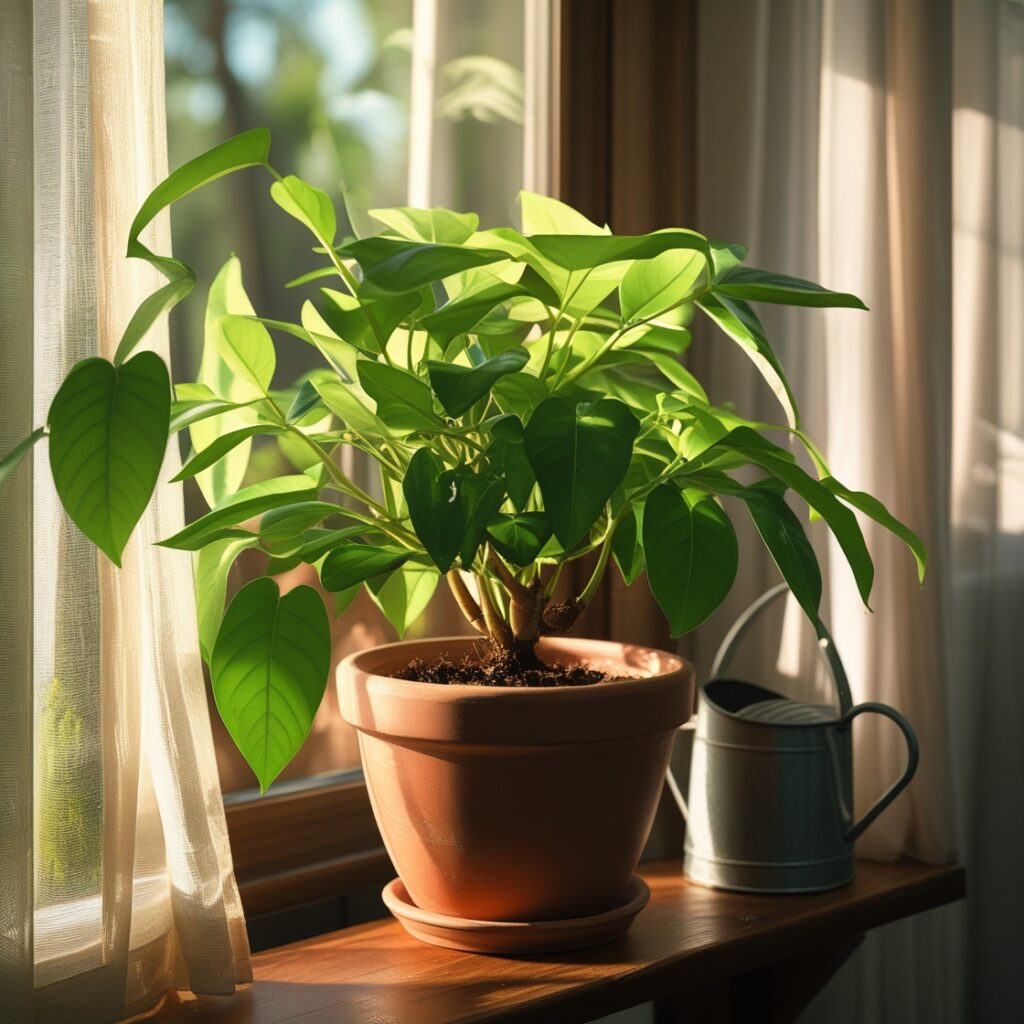
Average Size Expectations for Mature Money Tree Plants
Mature money tree plants, or Pachira aquatica, exhibit notable variations in growth depending on their environment and care. Indoors, these tropical plants typically reach a height of 6 to 8 feet when fully grown, making them ideal for homeowners seeking lush greenery without overpowering their living spaces. While their height may be smaller compared to their outdoor counterparts, indoor money trees (Pachira aquatica) often compensate with a fuller and well-proportioned canopy of glossy green leaves.
The width of a mature indoor money tree (Pachira aquatica) is another essential factor to consider. The canopy generally spans 3 to 4 feet, depending on pruning and branch development. Regular trimming can help maintain the symmetry and size of the plant, ensuring it fits comfortably in compact areas. Though the braided trunk of a money tree is eye-catching, it plays a supportive role in keeping the plant upright while emphasizing aesthetic appeal.
Growth patterns of the money tree are influenced by light, humidity, and the size of its container. A larger pot facilitates root expansion, enabling the plant to grow taller, while a smaller pot restricts growth and limits height. Environmental conditions such as indirect sunlight and moderate humidity levels further promote healthy development. Indoor growers should expect slower growth rates compared to money trees cultivated outdoors due to less intense light exposure and limited space.
For households aiming to optimize indoor money tree growth, strategic choices in care play a crucial role. Consistent watering schedules, proper fertilization, and regular leaf cleaning ensure steady growth and vibrant foliage. Over time, it becomes apparent that even within the constraints of indoor cultivation, money trees can thrive to a modest yet visually striking size well-suited for decorative purposes.
Conclusion: Growing a Healthy and Sizeable Money Tree
To nurture a healthy and flourishing money tree indoors, it is essential to understand its specific growth requirements and care strategies. The money tree (Pachira aquatica) thrives when provided with the ideal balance of light, water, temperature, and nutrients. Although often regarded as a slow grower, with proper care, it can reach an impressive height of 6 to 8 feet indoors, creating a striking focal point in any room.
Key Factors for Supporting Optimal Growth
- Light Conditions: Money trees grow best in bright, indirect light. Direct sunlight can scorch the leaves, while low-light environments may stunt growth. Positioning the tree near an east- or south-facing window often provides the best lighting conditions.
- Watering Needs: Consistent yet moderate watering is critical to prevent overwatering and root rot. It is advisable to water the money tree when the top couple of inches of soil feel dry. Ensure the pot has adequate drainage to retain moisture without waterlogging the roots.
- Temperature and Humidity: As a tropical plant, money trees prefer warm temperatures ranging between 65°F and 80°F and higher humidity levels. Using a humidifier or regularly misting the tree can help mimic its native environment and support growth.
- Pruning and Maintenance: Routine pruning ensures the plant maintains its size and shape while encouraging new growth. Remove yellowing or dead leaves to allow the plant to focus its energy on healthy development.
- Soil and Fertilization: Well-draining, nutrient-rich soil is essential. Fertilizing with a balanced liquid fertilizer once a month during the growing season can help the plant flourish. Avoid over-fertilizing to prevent chemical burns.
Additional Tips
For maximum growth potential, repotting every couple of years with fresh soil allows the plant’s roots to expand. Additionally, protecting it from drafts, cold air, or sudden environmental changes is crucial for maintaining its health.
Cultivating a thriving indoor money tree requires patience and consistent care. When grown under the right conditions, this resilient plant has the capacity to make a striking addition to any indoor space. Its growth not only enhances aesthetic appeal but also may symbolize wealth and luck for its caretakers.
Click the link below to buy “FLOWER Retro Wooden Stand Plant Terrarium with 3 Bulb Glass Vases for Hydroponic Home & Office Décor”
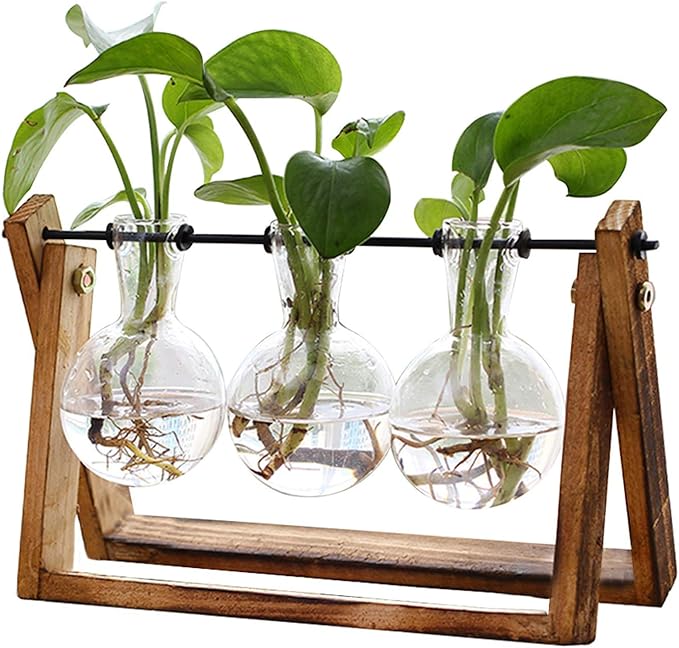
“Click the link below to buy “6-inch modern ceramic planter with glaze, drainage hole, and saucer for indoor & outdoor plants.”
